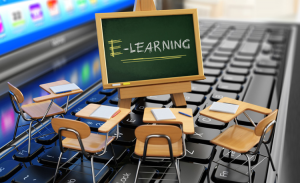
Primary and secondary education in India has changed drastically over the last ten years. Most of this overhaul can be attributed to technology. It has made inroads in how children learn and the way they can be engaged. By including scholars in the learning process, technology has improved their outcomes. It has also helped teachers by reducing the number of times they have to repeat the same concept. That said, there is still a long way to go. We have not reached the entire potential of technology in the K-12 sector.
While we talk about school education, Mr. Keshav of Chinmaya IAS Academy spoke to us about technology and civil services. He says – “Digital technology has made waves in India and is enabling more and more aspirants to use technology for exam preparation. Online Mock Tests help students prepare for competitive exams.”
Here are three ways technology and inventions have brought about a modification in the education system of the country.
- A child can learn anytime and anywhere.
Check out – There was a time when learning and teaching were limited to the four walls of a classroom. Today is not that time. Thanks to technology and invention of the internet a child can learn anytime and from anywhere. For example, a student can access an online learning platform from the comforts of the home to get any doubts clarified. They do not have to wait for the next school hours to begin to ask questions from their teacher.
Explore More About : Necessities For Parent-Teacher Communication Using Technology
- A child can learn from other children.
 It is the truth that people learn more from their peers than anyone else. With students, it is the same. They can learn a lot from each other, but a traditional classroom setup doesn’t offer many opportunities for such collaboration. On the other hand, technology has helped create apps and platforms where pupils can work together on assignments and projects. Hence, they can learn from each other and gain a better nderstanding of concepts.
It is the truth that people learn more from their peers than anyone else. With students, it is the same. They can learn a lot from each other, but a traditional classroom setup doesn’t offer many opportunities for such collaboration. On the other hand, technology has helped create apps and platforms where pupils can work together on assignments and projects. Hence, they can learn from each other and gain a better nderstanding of concepts.
- A child can learn in a more engaging manner.
Though there are many benefits advancements in technology have given the education system in India, the one that surpasses them all is 2D and 3D technology. It is inventions such as these that make even the most boring concepts more exciting and engaging for children. Digital content can transform theoretical concepts and laws into interactive activities. And when a child is able to see, touch, hear or feel something, they understand better and faster. In simpler words, digital content is more natural to grasp.
It is not just students who benefit from the digitalisation of academics; the teachers gain help too. They are able to explain and teach pupils with lesser effort and more understanding.
Yes, the time has come when teachers are slowly moving away from being the sole givers of knowledge but as we said the potential is yet untapped. We hope that in the near future technologies like augmented, virtual and mixed reality will completely change education. The teacher will just become a facilitator, and disseminator of knowledge will be technology itself.





